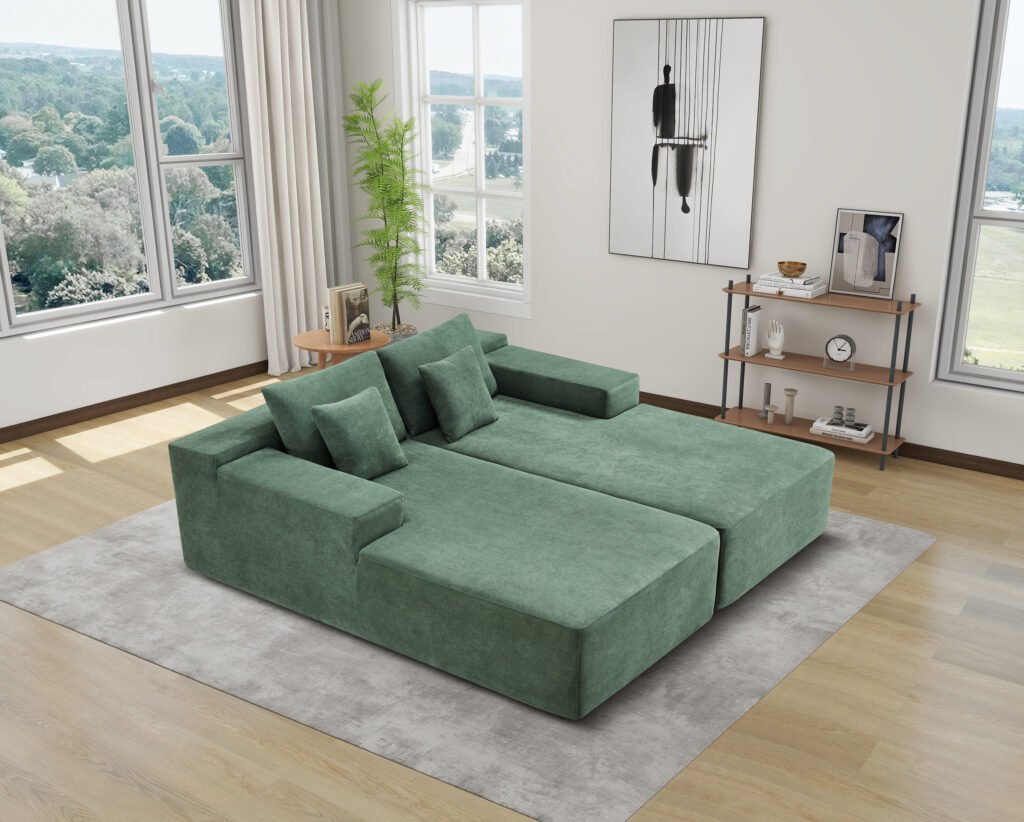In the evolving furniture market, compress sofas have revolutionized how consumers experience comfort and convenience. These sofas are engineered to be compressed into compact forms for efficient shipping and storage, then expand to their full size and comfort upon unpacking. For manufacturers and designers, creating a custom compress sofa involves a meticulous process that balances innovation, material science, and craftsmanship.
This guide walks you through the entire journey of custom compress sofa design—from the initial concept and material selection to production techniques and compression packaging. Whether you are a furniture brand, designer, or retailer, understanding these steps will help you develop high-quality, durable, and market-ready compress sofas that meet modern consumer demands.


Understanding Compress Sofas: The Basics
A compress sofa is not just a smaller sofa; it is a product designed with compression technology at its core. The sofa is constructed using materials and methods that allow it to be vacuum-packed or mechanically compressed without damage. Upon unpacking, it regains its original shape and comfort.
Key features of compress sofas include:
- Space-saving packaging reducing shipping volume by up to 70%
- Lightweight and modular designs for easy handling and customization
- Durable materials that withstand compression cycles
- Quick assembly or no assembly for end users
Conceptualizing Your Custom Compress Sofa
Market Research and User Needs
Begin by analyzing your target market’s preferences, space constraints, and lifestyle. Urban dwellers often prioritize compact, modular furniture with easy delivery. Consider trends such as:
- Demand for sustainable and eco-friendly materials
- Preferences for fabric types and colors
- Desire for multifunctional furniture (e.g., sofa beds, storage)
Defining Design Goals
Establish clear objectives:
- Sofa dimensions when expanded and compressed
- Desired comfort level and firmness
- Style and aesthetics aligned with brand identity
- Budget constraints and production scalability
Sketching and 3D Modeling
Use CAD software to create detailed designs and 3D models. This allows visualization of:
- Sofa shape and modular components
- Frame structure and compression mechanisms
- Fabric fitting and cushion placement


Material Selection for Custom Compress Sofas
Frame Materials
The frame must be strong yet flexible enough for compression:
- Engineered wood or plywood for balance of strength and weight
- Metal frames (steel or aluminum) for foldable or modular designs
- Composite materials for innovative lightweight options
Cushion and Foam
Foam choice is critical for comfort and compression recovery:
- High-density polyurethane foam (≥2.5 lbs/ft³) for durability
- Memory foam layers for ergonomic support
- Compression-friendly foam blends to maintain shape after unpacking
Upholstery Fabrics
Fabric must endure compression without wrinkling or damage:
- Performance fabrics (polyester blends) with high elasticity and wrinkle resistance
- Breathable, stain-resistant, and easy-to-clean materials
- Variety of textures and colors for customization
Production Process Overview
Frame Fabrication
- Cutting and assembling frame components according to design
- Welding or joining modular parts for foldability if applicable
- Surface treatment (painting, powder coating) for durability and aesthetics
Cushion Cutting and Shaping
- Precision cutting of foam to match design specifications
- Layering and gluing foam sections for comfort and resilience
Upholstery Cutting and Sewing
- Cutting fabric based on sofa dimensions and shape
- Sewing covers with reinforced seams for durability
Assembly
- Inserting cushions into covers
- Attaching upholstery to frames securely
- Quality checks for fit and finish
Compression Packaging
- Using vacuum machines or mechanical presses to compress sofas
- Monitoring pressure and duration to avoid damage
- Packaging compressed sofas in protective materials (plastic bags, cartons)
Quality Control and Testing
- Compression cycle testing to simulate shipping stresses
- Foam resilience and recovery testing
- Fabric durability and wrinkle resistance assessment
- Final inspection for defects and packaging integrity


Advantages of Custom Compress Sofa Design
- Tailored solutions for specific markets and customer preferences
- Enhanced brand differentiation through unique styles and features
- Optimized logistics and cost savings from compression packaging
- Improved customer satisfaction with quality and ease of delivery
Comparison Table: Key Factors in Custom Compress Sofa Design
| Design Aspect | Considerations | Options/Materials | Impact on Final Product |
|---|---|---|---|
| Frame Material | Strength, weight, flexibility | Engineered wood, metal, composites | Durability, compression compatibility |
| Foam Type | Density, resilience, comfort | High-density PU foam, memory foam blends | Comfort, shape retention after compression |
| Upholstery Fabric | Elasticity, wrinkle resistance, breathability | Polyester blends, performance fabrics | Surface appearance, durability |
| Modular Design | Number of modules, reconfigurability | Fixed vs modular units | Customization, shipping ease |
| Compression Method | Vacuum packing, mechanical pressing | Vacuum sealing, foldable mechanisms | Packaging volume reduction, damage risk |
| Assembly Complexity | Tool-free vs professional assembly | Zippers, clips, snap fasteners | User convenience, setup time |
| Sustainability | Material sourcing, recyclability | Certified wood, eco-friendly fabrics | Environmental impact, consumer appeal |
Case Study: Modular Sofas’ Custom Compress Sofa Workflow
At Modular Sofas, we follow a rigorous custom design process:
- Collaborate with clients to define specifications and style
- Source premium materials optimized for compression
- Utilize advanced CAD and compression machinery
- Conduct thorough quality testing before market release
Our custom compress sofas combine innovation, comfort, and style, tailored to each client’s unique needs.
Final Thoughts
Designing a custom compress sofa is a complex but rewarding endeavor that requires balancing innovation, material science, and user-centric design. By carefully selecting materials, optimizing production processes, and employing advanced compression techniques, manufacturers can deliver sofas that delight customers with their convenience, comfort, and aesthetic appeal.
For brands and retailers seeking to stand out in the competitive furniture market, custom compress sofas offer a unique opportunity to combine style with practicality.
Explore our custom compress sofa solutions and design support at Modular Sofas, where innovation meets craftsmanship.